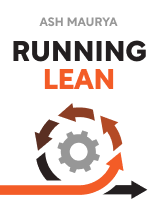

This article is an excerpt from the Shortform book guide to "Running Lean" by Ash Maurya. Shortform has the world's best summaries and analyses of books you should be reading.
Like this article? Sign up for a free trial here.
What does it take to build a business model that works? What are all the components of a business model?
The nine components of a business model described by Ash Maurya in Running Lean cover the essentials for a business that is adaptive, flexible, and sustainable. These include defining customer groups, getting to know your customer group’s needs and desired solutions, and more.
Learn more about the nine elements of a business model that are necessary for success.
The Nine Essential Components of a Business Model
According to Maurya, your Lean Canvas should include the following nine components of a business model: customer groups, customer problems, possible solutions, value offer, touchpoints, profit sources, expenses, key performance indicators, and competitive edge. Let’s explore each element in detail.
Component 1: Customer Groups
Hypothesize the customer groups that will want your product. Maurya suggests that you narrow your selection of customer groups by distinguishing between paying customers and non-paying customers and then focusing on early adopters rather than mainstream users. (Recall: If different customer groups have distinct needs influencing other aspects of your business model, you should create separate Lean Canvases for each group.)
Example: You’re offering a free productivity app. Advertisers and professional teams are your paying customers, while those using the app for free are your non-paying customers. Within these groups, early adopters demonstrate a strong interest in exploring new advertising opportunities or engaging with novel app features. You choose to draft three Lean Canvases: one for early adopter advertisers, one for early adopter professional teams, and one for early adopter non-paying customers.
Component 2: Customer Problems
Hypothesize the top three customer problems to address that will attract and satisfy your target customer group. Maurya recommends that you list the existing alternatives customers use to address those problems and identify the issues they encounter while using these alternatives.
Example: Focusing on the professional teams customer group, you identify that their problems revolve around time management, task prioritization, and collaboration. The existing alternatives they use to address these problems include traditional to-do lists, calendar apps, and project management tools. The issues they face when using these alternatives include scattered task tracking, lack of integration, and limited collaboration features.
(Shortform note: An effective way to identify customer problems when going through each of these elements of a business model is to use existing alternatives yourself. This practice immerses you in the user experience, offering firsthand insights into their challenges and frustrations. For example, you might ask your team members to try out the most popular productivity apps that professional teams currently use and take note of the issues they experience.)
Component 3: Possible Solutions
Hypothesize the solutions that will effectively address your target customer group’s problems. Maurya says that you should focus on the simplest thing that effectively addresses the problem.
Example: Simple ways to address time management problems would be to offer features such as customizable calendars, reminders, and time-tracking tools. For task prioritization problems, you might incorporate algorithms that help users organize and categorize their tasks based on urgency and importance. For collaboration problems, you could offer real-time collaboration, task assignment, and progress tracking features.
(Shortform note: The idea that the simplest solution is often the best one can be attributed to Occam’s razor: a philosophical principle that suggests choosing the simplest explanation or solution to effectively explain a phenomenon or solve a problem. In terms of product development, this means you should eliminate extraneous features and hone in on the core functionalities required to tackle each distinct problem. This approach ensures that the resulting solution remains uncluttered, direct, and aligned with user needs. This is among the most important elements of a business model.)
Component 4: Value Offer
Hypothesize how your solution offers unique value and why it will resonate with your target customer group. Maurya points out that you should explicitly connect your offer’s value to the primary problem you aim to solve for your customers.
Example: Your productivity app offers unique value and addresses the customer problems you outlined by seamlessly integrating time management, task prioritization, and collaboration features in a single platform.
(Shortform note: Brian Tracy (The Psychology of Selling) suggests a three-part structure to connect your offer’s value to the problem you intend to solve: “Because of [feature], customers can [benefit], which means [relevance].” This structure links the product or service feature to its benefit and then makes it relevant to the customer. For example, “Thanks to our unique algorithm (feature), collaboration becomes effortless (benefit), resulting in heightened productivity and the ability to achieve more in less time (relevance).”)
Component 5: Touchpoints
Hypothesize the communication and delivery touchpoints through which you’ll interact with your customers and provide your products or services. Maurya suggests that you identify touchpoints that can handle increased demand and accommodate future growth so that you can start building and testing them alongside your offer.
Example: Your app will interact with customers through multiple touchpoints, including a mobile application available on major platforms, a web-based platform accessible from any browser, and integration with popular productivity tools like email clients and project management software. You intend to acquire thousands of customers, yet your website can currently handle only 50 customer sign-ups simultaneously before crashing. Therefore, you ensure that your server capacity and infrastructure can accommodate an expanding customer base without sacrificing performance or user experience.
(Shortform note: Businesses tend to assume that more touchpoints will lead to more customers, so they work hard to create multiple touchpoints that can accommodate future growth. However, research indicates that too many touchpoints can reduce the quality of service that you deliver and damage customer experience. Customers care more about the quality of service you provide than what touchpoints you use. Therefore, prioritizing the development and integration of fewer touchpoints increases their chances of success.)
Component 6: Profit Sources
Hypothesize how you intend to generate a profit and the prices that your target customer groups will pay. Maurya emphasizes the importance of setting prices early on, as it influences the customer groups you’ll attract. This is an important piece of the nine components of a business model
Example: You decide to implement a tiered pricing model for the app: a free account that provides access to the app’s core features and benefits, and a premium account priced at $9.99 per month, offering advanced features and enhanced collaboration tools. To further generate revenue, you plan to charge advertisers for targeted advertising opportunities within the app.
Component 7: Expenses
Hypothesize the expenses associated with operating your business model. Maurya advises that you consider both short-term and long-term expenses. Expenses are a key part of the components of a business model, since managing expenses is key to business viability.
Example: Your short-term expenses include software and server development, setting up a customer support infrastructure, and designing initial marketing campaigns. Your ongoing expenses include personnel salaries, regular software update and maintenance fees, server hosting fees, and marketing costs.
Component 8: Key Performance Indicators
Hypothesize three to five key metrics that will help you measure the progress and success of all the components of your business model. Maurya suggests that you prioritize outcome metrics over output metrics for a more accurate evaluation. Outcome metrics gauge the results you achieve, measuring the actual outcomes of your efforts. In contrast, output metrics focus on the actions you take without capturing the tangible results of those actions.
Example: Instead of focusing on output metrics like the number of emails sent or features developed, you intend to track outcome metrics that measure the results you achieve from your efforts. These metrics include your customer acquisition rate, conversion rate from free to premium accounts, average revenue per user, and customer lifetime value.
Component 9: Competitive Edge
Hypothesize the features and benefits that will set your offer apart from the competition. Competitive edge is an important part of the nine components of a business model because realistically, you will have competition when you enter the market. Maurya suggests that you focus on why your offer is difficult for competitors to replicate. He explains that while competitors will always attempt to mimic successful products or services, you can gain a competitive edge by leveraging the power of intangible factors. These factors, such as a specialized team’s expertise or a customer-focused approach, contribute to your offer’s unique appeal, making it challenging for competitors to imitate.
Example: Your app’s competitive edge lies in its seamless integration of multiple productivity tools, eliminating the need for users to switch between different tools or platforms. Additionally, your continuous updates, responsive customer support, and user-centric approach will provide a superior user experience that competitors won’t be able to replicate.
(Shortform note: William M. Luther (The Marketing Plan), expands on how to leverage intangible factors, explaining that what your business does better than your competitors helps differentiate both your product and your business in a way that appeals to customers. To achieve this, focus on components of a business model that will allow you to consider how you want customers to perceive your business and what will influence them to choose you over competitors. For example, brands that target eco-conscious customers emphasize how much they donate to environmental programs. This implies that they’re more environmentally friendly than other businesses and care more about what matters to customers.)

———End of Preview———
Like what you just read? Read the rest of the world's best book summary and analysis of Ash Maurya's "Running Lean" at Shortform.
Here's what you'll find in our full Running Lean summary:
- The reason why so many business models fail
- Why you should never assume you know what your customers want
- Why your business should be built on continuous validation and iteration






